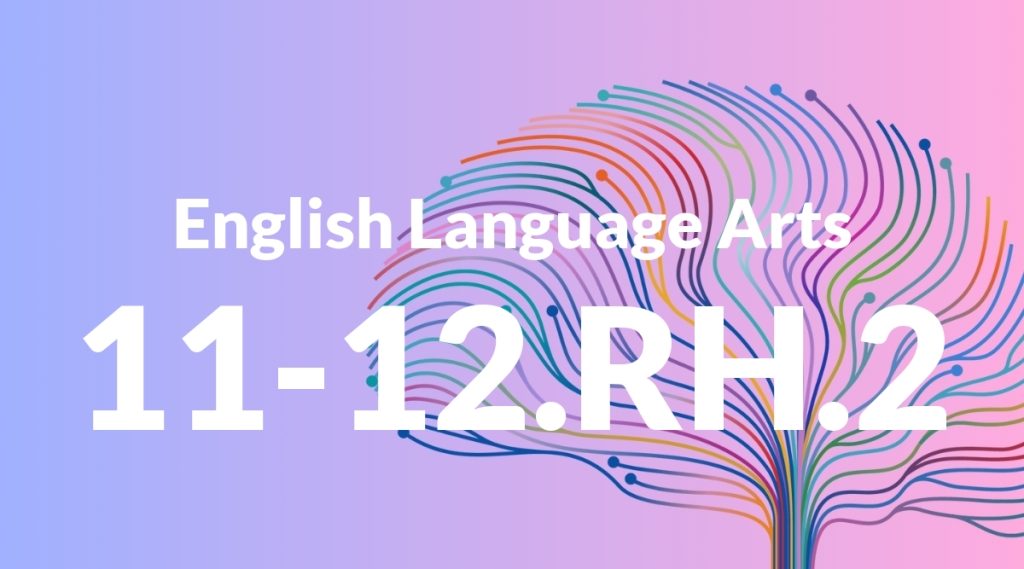Standard: 11-12.RH.2 – Determine the central ideas or information of a primary or secondary source; provide an accurate summary that makes clear the relationships among the key details and ideas.
Grade level: Grade 11-12
Subject: English Language Arts
Domain: History/Social Studies
Teacher Overview
This standard focuses on helping students determine the central ideas of primary and secondary sources and summarizing them accurately. This skill is essential for critical thinking and analysis in both historical and contemporary contexts, enabling students to make informed judgments based on evidence. Students should already be able to identify main ideas and supporting details, summarize shorter texts, and distinguish between primary and secondary sources.
Students will develop the ability to critically evaluate texts, synthesize information from multiple sources, and construct well-informed arguments, preparing them for advanced academic work and informed citizenship.
Common Misconception 1
A common misconception is that summarizing is merely condensing the text. This is incorrect because a summary should highlight the key ideas and how they relate to each other, providing a clear understanding of the overall message.
Intervention 1
To address this, model summarizing by breaking down texts into main ideas and supporting details, and show how these elements interconnect to form a coherent summary.
Common Misconception 2
Another misconception is that primary sources are always more reliable than secondary sources. This is incorrect because both types of sources can be biased or lack context, and students need to evaluate each source critically.
Intervention 2
Teach students to consider the context, purpose, and bias of both primary and secondary sources, using examples to illustrate how these factors can affect reliability.
Prerequisite Knowledge
Students should have a basic understanding of how to identify main ideas and supporting details in a text, as well as experience with summarizing shorter texts. Familiarity with primary and secondary sources is also beneficial.
Subsequent Knowledge
After mastering this standard, students will be able to critically evaluate complex texts, synthesize information from multiple sources, and construct well-informed arguments based on their analyses.
Instructional Activities
- Analyze historical speeches and identify central ideas.
- Summarize key points from a news article.
- Compare summaries of different historical documents.
- Evaluate the reliability of primary and secondary sources.
- Create a summary of a complex academic paper.




